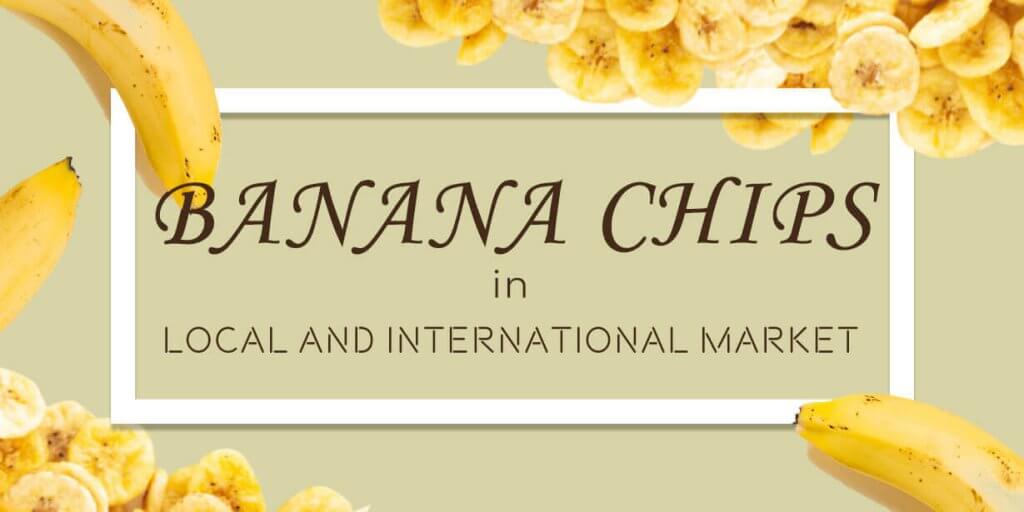With the increasing number of diets, gyms, and wellness centers springing in our neighborhoods, we can say that the current generation is becoming more health conscious. Millenials are also known to more likely choose organic foods rather than processed ones. These shifts in consumer behaviors make the industry if a healthier food option like the banana chips thrive. Let us find out how banana chips is performing in the local and global markets, and why more and more consumers are switching from traditional and widely-consumed commercial chips.
How Banana Chips are Made
Banana chips are typically made from Cardava banana variant which are mostly grown in tropical countries and in Mindanao in the Philippines. The Cardava bananas are harvested and are transported to manufacturing plants to produce our favorite banana chips.
First, the bananas are washed in water to remove all debris that hinder topnotch export quality. Then, they are peeled and sliced by machine or by a personnel, depending on the scale of production. The sliced bananas are then soaked in brine water to prevent oxidation that causes discoloration. Next, they go straight to blanching. Using centrifugal force, the bananas are de-watered and prepped for frying. Oftentimes, the bananas are fried in coconut oil or sunflower oil depending on the product requirement and variant. Once crispy, the now chips are de-oiled. Some manufacturers use turmeric or ginger powder to enhance the chips’ color. Afterwards, the chips are seasoned. Finally, the banana chips go ahead to packaging and labelling, and then delivered to go distribution channels.
RELATED ARTICLE:
Nutritional Values
Though banana chips came from the wonderful banana fruit, the chips do not largely contain its main ingredient’s nutritional merits. Because of all the processes during manufacturing, the banana chips lose most of bananas’ health benefits. Here are some of the banana chips’ prominent nutritional values:
- Fat – Though there are baked option, banana chips are mostly fried. Hence the high fat content. 1 ounce of the product contains 10g of fat and 8g of those are saturated.
- Fiber – This nutrient is the digestive system’s best friend. It cleans out intestines which makes our bowel movement healthier. Our banana chips have 2g of fiber per ounce.
- Potassium – Bananas are known to be a good source of potassium. Banana chips also have this nutrient though in small amount. The chips just contain 152mg per ounce.
- Added sugar – While some manufacturers have unsweetened option, most banana chips have added sugar. This makes the chips taste better but heavy consumption can trigger blood sugar spikes.
Despite the diminished nutritional content of banana chips, more people still choose this instead of the potato chips which are also well-known to be loaded with saturated fats. Just like in any food consumption, anything taken too much is bad. Therefore, banana chip snacking must be done with much mindfulness.
RELATED ARTICLE:
Market Segmentation
These are how the banana chips are presented and are performing in the global market:
1. By type
- Unsweetened
- Sweetened
2. By application/distribution channels
- Online sales – through online markets that deliver goods door-to-door
- Offline sales – through physical stores as local supermarkets, hypermarkets, and groceries.
3. By cut
- Wholes
- Halves
- Quartered
- Broken fines
- Diagonals
- Diced
Market Performance
The Philippines is known to be one of the top producers of bananas in the world. We ranked fourth after China, Uganda, and the largest producer — India. Last 2014, we were able to produce 9.2M Tons of bananas which made up 6% of total global production of bananas. Though we export quality bananas and banana by-products, we, Filipinos still mostly consume our locally produced bananas. Here are some amazing figures that picture the banana industry scene in the local market and how well the Philippines is performing in the international market.
1. 65% of Philippine produced bananas are consumed by the local market.
- 16.5% of which are banana by-products such as banana chips
- 45.5% are sold in wet markets as table bananas
- 4% are considered loss, perhaps due to rotting or used in animal feeds
2. 34% of Philippine produced bananas are exported to 30 countries, the US and EU being the main importers.
3. 90% of Philippine banana chips are produced in Mindanao.
4. Philippines exports to Vietnam, US, China, UK, and Germany making up the 64% market share in global banana chips industry in 2007-2011.
Banana is one of the most produced fruits in the world. People all over the world consume this tropical fruit maiy because of its availability and nutritional merits. Because of the high supply and production, by-products such as banana chips are taking their space in the market.
In fact, the banana chips industry has already produced USD 35.5M worth of product in 2005 for the global market. In 2008, a staggering USD 56.3B worth of banana chips are produced. If this growth rate continues, the banana chips market is projected to increase around 10-15% per year in the international market.
Check our very own Royce Food Banana Chips Here!

